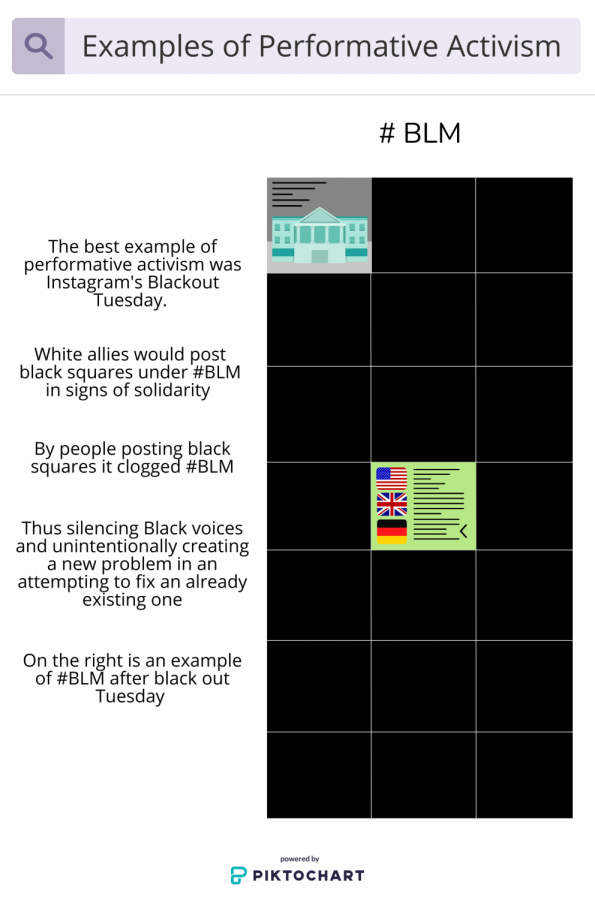Performative activism affects modern political movements
Performative activism comes in may forms, but knowing what it looks like helps to prevent it.
May 20, 2021
With the increase of political awareness or “woke” culture, discussing politics is commonplace in any conversation, but with more and more people attempting to advocate for minorities and political movements, an issue has arisen: performative activism.
“Performative activism is the representation of activism without truthful understanding or motives, posting activism, only because others are doing it too,” sophomore Isabell Lee said.
Though activism benefits from public attention, not all of it is helpful in spreading awareness, an example of this kind of performative activism would be similar to an individual posting a picture of George Floyd with the single caption of “Black Lives Matter” with no context or deeper message as to why they posted it.
“Performative activism can be seen often on social media, but another good example would be if you have seen/read ‘The Hate U Give’. Hailey supported Justice for Khalil but only to get out of going to class,” freshman Laura Mineo said. “Some would say this is activism because she was advocating for a cause, but she was not doing it because she cared, but because it would benefit her and improve her social standing.”
Performative activism can not only come from random individuals, but can even be seen from large companies and brands.
“Many large scale companies will support something or someone simply to gain consumer/ media attention,” Mineo said. “This can be seen as public statements with nothing that follows through to make a true and lasting change, or it can be seen through decorating products making commercials showing they value certain oppressed communities and again, not contributing anything to fix the problems these communities face.”
With brands attempting to stay relevant, influencers across platforms can be seen doing the same. In June of last year, Tik Tok content creators like Charlie D’Amelio would change their profile pictures to the BLM fist or a black photo with the words “Black lives matter” in white text.
“So many influencers posted a single BLM post and maybe even changed their profile pictures to BLM for a little bit,” Lee said. “After that they were silent on BLM and that shows performative activism where they only posted because everyone else was doing it too.”
To accompany the problem of brands and influencers not doing enough, accounts can find ways to profit off of doing too much of the wrong thing. An example of an account that does this would be Asian Dawn. On the surface level, this account posts articles and information about hate crimes towards Asian Americans, but scrolling further shows that most of the account’s posts are predominantly covering the brutalization of Asian Americans.
“A lot of the activism with Asian Lives Matter is sincere and informative, but I have seen some performative activism where people will just post viral assault videos with no context,” Lee said. “I hope that in the future social media can be more attentive and aware of the activism they post by learning and having a good amount of background knowledge before posting.”
Though, there are instances of performative activism, true activism can be as simple as signing petitions aimed to benefit a movement, further educating yourself on the topic, talking to people who the issue directly affects, and of course attending protests about these issues.
“On the surface [performative activism] doesn’t seem bad, [performative activism] can sometimes help amplify the voices of people who are so often not heard, but it doesn’t make a substantial difference in society,” Mineo said. “Real change needs to be made because people care and are willing to do the work to make it happen, not because someone sees it as a way to personally gain something.”






